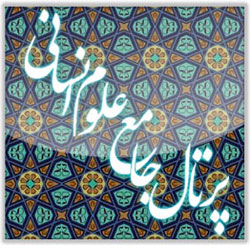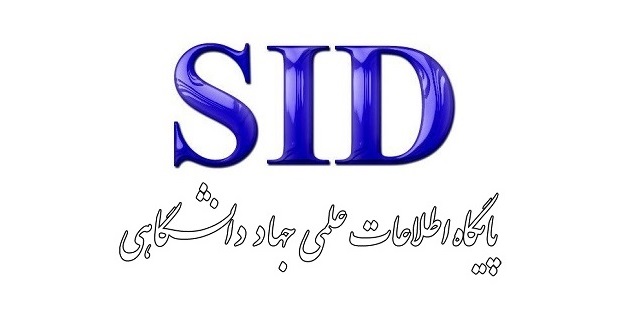Investigating the Indicators and Key Components Influencing the Programming of the National Housing Plan
Keywords:
Planning, National Housing, Indicator, EntropyAbstract
Given the significance of housing in sustainable urban development and improving citizens' quality of life, the present study investigates the indicators and key components of design in Iran’s National Housing Plan. The research method consisted of three main stages. First, key components of housing planning were identified through documentary studies and a review of academic sources, official documents, and international experiences. A total of six indicators encompassing 30 components were identified. The validity of the indicators was assessed using the Delphi method by convening a panel of 30 experts over two rounds. After validating the components, a questionnaire with 30 items on a Likert scale was developed. The validity of the questionnaire was confirmed through expert judgment, confirmatory factor analysis (CFA), and the AVE and CR indices. Its reliability was assessed using the test-retest method (correlation coefficient = 0.85) and Cronbach’s alpha (0.89). The statistical population included housing applicants, citizens, and researchers, and the sample size was determined to be 100 individuals using Cochran's formula. Ultimately, data were weighted using the entropy method. According to the results derived from the entropy model, economic indicators had the highest weight (0.177), indicating the greatest importance. This was followed by environmental components and architectural and construction standards, both with weights of 0.169. The lowest final weight belonged to "design guideline lines" with a value of 0.148, suggesting it had the least influence in the overall evaluation compared to the other indicators. Based on the findings, the most significant key indicators for programming the National Housing Plan in Iran fall into five general categories: architectural and construction standards, managerial indicators, social indicators, economic components, and environmental aspects.
Downloads
References
1. Ahmad Motlaghi E, Taghipour AA, Asgari Q. Ranking Urban Areas Based on Quantitative and Qualitative Housing Indicators (Case Study: Damghan City). Urban Space and Social Life. 2024.
2. OECD. Housing and Inclusive Growth: OECD Publishing; 2020.
3. Gehl J. Cities for people. Washington, DC: Island Press; 2010.
4. Alexander C. A pattern language: Towns, buildings, construction. New York, NY: Oxford University Press; 1977.
5. Mirmoghtadaee M. Demands and feasibilities of open building in Iranian urban context. open house international. 2008;33(1):61-71.
6. Heydari AA, Hosseini M, Bahraini SH. Comparative Study of the Mehr Housing and National Housing Plans in Iran Sustainable Architecture and Housing Design. Scientific-Research Quarterly of Urban Studies in Iran. 2021;12(3):45-60.
7. Shamseddini A, Safarian E, Nekooi Bakhsh MR. Identifying Challenges and Evaluating the Performance of Mehr Housing from Citizens' Perspectives (Case Study: Pardis Town - Kazeroon). Human Geography Research. 2018;50(3):609-25.
8. Habitat UN. Guidelines for sustainable housing design. 2020.
9. Arcadis. International Construction Costs Report 2022. 2022.
10. Saylam S. Vernacular Iranian housing as a sustainable model of functional and aesthetic comfort in contemporary passive dwellings. Journal of Infrastructure, Policy and Development. 2024;8(16):10562.
11. Safai R, Keshavarz SR, Siyar Samani S, editors. Evaluating Mehr Housing from the Perspective of Urban Environmental Quality. Seventh National Conference on Sustainable Development in Geography and Planning, Architecture, and Urbanism; 2018; Tehran.
12. Noori R, Borborajdari M, Borborajdari M. Examining the Government's Achievement of Mehr Housing Goals: A Case Study of Pardis New City in Tehran. Journal Title. 2016;15(43):445-52.
13. Batty M, Axhausen KW, Giannotti F, Pozdnoukhov A, Bazzani A, Wachowicz M. Smart cities of the future. The European Physical Journal Special Topics. 2012;214:481-518.
14. Faraghnia F, Noroozian P, editors. Examining the Effects of Increased Building Density on Quality of Life Indicators in Talesh City. National Conference on Human-Centric Architecture and Urbanism; 2013; Tehran.
15. Lynch K. The image of the city. Cambridge, MA: MIT Press; 1960.
16. Oliver P. Built to meet needs: Cultural issues in vernacular architecture. Oxford, UK: Elsevier; 2006.
17. Ghafourian M, Aghaei S. Revisiting and Prioritizing Flexibility Criteria in Apartment Housing Design in Iran. Safa. 2016;26(3):41-64.
Downloads
Published
Versions
- 2025-07-03 (2)
- 2025-02-16 (1)
Submitted
Revised
Accepted
Issue
Section
License
Copyright (c) 2025 سپهر ادیب زاده (نویسنده); بهمن ادیب زاده; علی اکبری (نویسنده)

This work is licensed under a Creative Commons Attribution-NonCommercial 4.0 International License.









